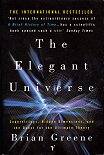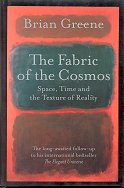The beginning of the 20th century saw two major revolutions in physics: general relativity explaining the universe in the large, and quantum mechanics explaining it in the small. Each is fantastically successful -- but they are mutually inconsistent. Much effort has been spent on trying to find their successor: a grand unified "Theory of Everything". Superstring theory, a product of the last quarter of the same century, may well be that theory.
Popular science books are usually written either by popularisers -- when the science can feel a bit shallow -- or by scientists -- when the writing can leave something to be desired. With The Elegant Universe we get that all too rare gem -- great writing, and great physics. Brian Greene puts over mind-wrenchingly difficult concepts with stunning clarity, yet without leaving behind a feeling that things are being over-simplified. He explains counter-intuitive concepts with masses of enlightening analogies, but -- and this is where many popularisations fall down -- he is always careful to point out where those analogies fail. And it is physics all the way down -- Greene feels no need to distract from the aesthetic beauty of the science with any of the unnecessary diversions into strange philosophy or pseudo-religion that mar many a popularisation.
The first part of the book "merely" explains special and general relativity, and quantum mechanics, and why they don't work together. If you have not seen this kind of material covered before, the book is worth reading for this section alone. The clarity of the exposition here promises much. And that promise is delivered in the middle part, which gets down to the meat: superstring theory, covering both the "first superstring revolution" of 1984--1986, and the "second superstring revolution" that started in 1995. I was totally gripped by the lovely descriptions of the tiny vibrating strings giving rise to the families of "fundamental" particles, and the wonderful weird curled up dimensions. Finally we get some more speculative stuff: M-theory, the links with black holes, cosmology, and the beginning(s) of the universe(s). This is necessarily incomplete -- the physics is still being worked out. But it is still fascinating.
I am eagerly awaiting a sequel, or second edition, in a decade or so, with these latter chapters filled out more. Most highly recommended.



